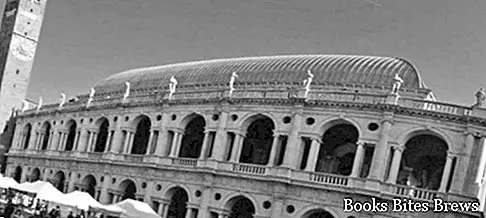What to see in Vicenza, one-day itinerary including the main monuments and places of interest, including Piazza dei Signori, Basilica Palladiana and Palazzo Chiericati.
Tourist information
Vicenza is a city in the Veneto region that rises on the northern slopes of the Berici mountains on the banks of the Bacchiglione river.
The rich historical and artistic heritage of the city reached its peak in the Renaissance through the work of the great architect Andrea Palladio.
The territory where Vicenza stands today, which has been inhabited since the Paleovenetian age, entered Roman orbit towards the middle of the first century BC, and it is precisely in the subsoil of the city, and also outside the walls, that Roman Vicenza is hidden.
The current urban layout of the historic center is based on the orthogonal mesh of cardines and decumans of the Roman city, in fact Corso Palladio, the main street of the city center, coincides with the maximum decuman of the Roman city, and Piazza dei Signori stands on the site of the ancient Roman forum.
In the Middle Ages the city expanded, and already at the beginning of the fifteenth century, when Vicenza made an act of dedication to the Serenissima of its own volition, its city structure was essentially the same as today, renewed and admirably embellished in the Renaissance.
Vicenza therefore includes elements of three periods: Roman, medieval and Renaissance, all perfectly integrated into its urban landscape.
Piazza dei Signori is the artistic heart of Vicenza and the main meeting point for the people of Vicenza, magnificent architecture overlooks it, for the most part designed by the famous architect Andrea Palladio, who built numerous buildings in this city.
The Palladian Basilica, the main public building in Vicenza, consists of an internal fifteenth-century nucleus corresponding to the Palazzo della Ragione, by Domenico da Venezia, and a double order of loggias with Doric-Tuscan and Ionic columns, made by Palladio, the which gave the building its ingenious architectural style.
The Palladian Basilica, together with the other buildings of the famous architect Palladio, is part of the world heritage sites declared by UNESCO.
What see
Torre Bissara, known as Torre di Piazza built in the second half of the 12th century, is located near the Loggia and, with its 82 meters, is one of the tallest buildings in the city. Of the original tower only the base remains, since the tower was raised and completed in the 14th and 15th centuries.
Recommended readings- Veneto: Sunday day trips
- Schio (Veneto): what to see
- Vigo di Cadore (Veneto): what to see
- Vittorio Veneto: what to see
- Agordo (Veneto): what to see
The tower was destroyed and rebuilt due to the bombings of the Second World War.
Since 2005, the "ninth hour" has been reactivated, a melody composed by Pierangelo Valtinoni and rang by the five bells six minutes before 12 and six minutes before 18.
On the opposite side of the Torre Bissara and the Palladian Basilica is the Loggia del Capitanio, also known as Palazzo del Capitaniato.
It is a Palladian work dating back to the second half of the sixteenth century.
Ancient seat of the military representative of the Republic of Venice, today it is the seat of the City Council.
The Palazzo del Monte di Pietà, which is located in front of the Palladian Basilica, is a monumental complex built between the 15th and 17th centuries.
Initially it only served as a pawn shop, then it incorporated the fourteenth-century church of San Vincenzo, patron of Vicenza.
The Palazzo Barbaran da Porto is a building designed by Palladio, built between 1570 and 1575, as the home of the noble Montano Barbarano from Vicenza.
The building houses the Andrea Palladio International Center for Architectural Studies and the Palladio Museum.
Palazzo Chiericati is another very beautiful building designed by Palladio in 1550 for Girolamo Chiericati. The building was completed at the end of the seventeenth century as per the original drawing. Today it houses the Civic Art Gallery.
Olympic Theater is the latest masterpiece of Palladian architecture created by Vincenzo Scamozzi.
The project was commissioned to Palladio by the Olympic Academy, a congregation of important personalities from Vicenza in the field of literature, science and the arts, in 1580, the year of the architect's death.
Palladio transfers the results of his studies on classical theater to this work based on the interpretation of the treatise De architectura by Vitruvius.
The Church of Santa Maria Nova was designed by Palladio and built after the architect's death between 1585 and 1589, probably by Domenico Groppino, who was one of his pupils.
The Cathedral of Santa Maria Annunciata is the Cathedral of Vicenza founded in the early Christian era but rebuilt several times. The dome, the north side portal and the Almerico chapel were designed by Andrea Palladio.
The Gothic forms it still conserves date back to the fifteenth century.




